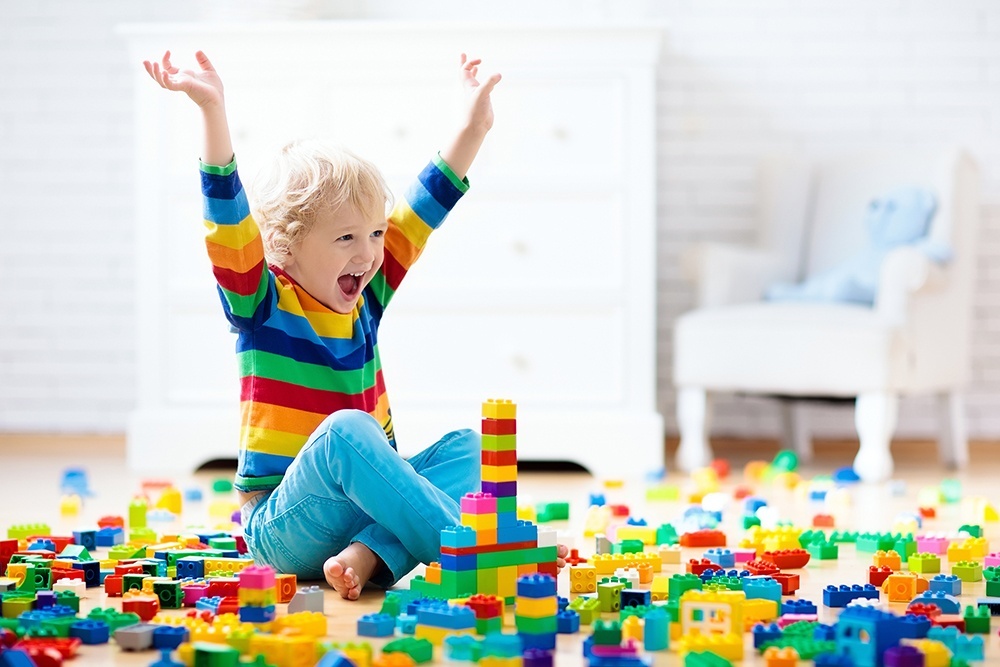Tis the season of gift-giving, and though many things have changed because of the pandemic, kids are as excited as ever about receiving a bounty of toys!
For parents whose children may have special needs, the good news is that there are many toys that are designed for a variety of developmental and educational profiles—just google “toys for special needs” and you’ll come up with dozens of companies.
As with any year, safety is paramount when choosing toys. The potential dangers are clear: The U.S. Computer Product Safety Commission reports that in 2019, there were an estimated 162,700 toy-related, emergency department-treated injuries and 14 deaths to children younger than 15, with most of the deaths associated with choking on small parts such as small balls, small toy parts and riding toys.
The pandemic has led many people to shop for toys online rather than stores—not a bad thing in and of itself, but it does present a potential problem. “Our concern is that there may be an increase in counterfeit toys out there,” says Joan Lawrence, Senior Vice President, Standards and Regulatory Affairs at The Toy Association, a not-for-profit trade association. “If those sellers skirt the rules on intellectual property [by selling counterfeits], then we worry they may also skirt the rules on safety.”
Her recommendation: Buy toys on a website owned by the toy manufacturer or on a big box retailer website. “Look for verified sellers, whatever marketplace you buy from online,” she says.
While it can be difficult to identify who the verified sellers are, major brands are good bets, because they are likely to abide by safety regulations. Lawrence adds, “Does the seller have its own website? If not, it may be red flag. And if there are typos in the listing or poorly photoshopped images, those are clues that it may have been put together on the fly.”
Another important piece of advice from Lawrence: Parents should always check and follow age guidance on toy packaging. The age-grading isn’t about how smart your child is—it’s safety guidance that’s based on the developmental skills and abilities of children at a given age, and the specific features of a toy.
Following are some more safety tips from The Toy Association:
- Adults should always supervise play, especially for younger children.
- Avoid toys with small parts when shopping for children under age three and children who mouth toys. Test the size of toys and other objects around the home with a Small Parts Tester.
- Check to see that plush (stuffed) toys have age-appropriate features such as embroidered or well-secured eyes and noses for younger children, and seams that are reinforced to withstand an older child’s play.
- Dispose of all unnecessary toy packaging and gift-wrap as soon as possible (piles of discarded gift-wrap can conceal sharp objects and the edges of hard plastic packaging that can cut small fingers).
- Read instructions carefully. Save directions, warranties and assembly hardware.
- Regularly sort through the toy box to discard broken toys.
- Get on the floor and play with your kids! Demonstrating the correct way to use a toy or game is the best way to make sure your child understands how to properly and safely enjoy it.
North Shore Child & Family Guidance Center’s therapists are experts on the use of toys and games to enhance social and emotional growth and well-being, says Paul Vitale, Executive Vice President Finance & Operations at The Toy Association and President of the Board of Directors of the Guidance Center. “I’m proud to be part of an organization that always puts the health, happiness and safety of children at the top of the list.”
Sensory Play Ideas for Children with Special Needs
Here are some great ideas for things to do with your child who may be on the autism spectrum, diagnosed with ADHD or OCD or have any sensory processing disorder, from The Genius of Playwebsite:
- Get Your Beat On
Sounding out words, while critical to language skill development, can sometimes be a challenge− especially if a word has multiple syllables. Turn frustration into fun by putting it to music. Tap/shake an instrument as kids say each syllable. Music can also allow a child struggling to verbalize words a way to express themselves and their understanding.
- Surprise Box
Think of this like a surprise sensory bin. Exploring an unknown object in a safe space can help decrease your child’s discomfort and fear of new unknowns in the future, while also aiding their processing and communication skill development. Try using uniquely shaped or textured objects!
- Puppet Play
Puppets can serve as versatile tools for play and learning. Beyond communicating their emotions, puppets can also be used to practice conversational skills and reinforce learned tasks by having kids teach it to the puppet.
- Big Art
Allowing kids to take movement breaks throughout the day can help them to reset and refocus. Why not turn it into art? Grab some chalk and/or washable markers and let kids use their whole bodies to create larger-than-life designs.
- Basket Toss
Who says a laundry basket is just for dirty clothes? Use it for game time and help build up a child’s gross motor skills in the process.
- Freeze Dance
Movement of any kind is great for helping develop a child’s sense of body awareness and balance. Adding a “freeze” element to your dance party can also support kids’ ability to process, organize, and respond to different sounds.
Sources:
https://www.cpsc.gov/Safety-Education/Safety-Education-Centers/holiday-safety
















